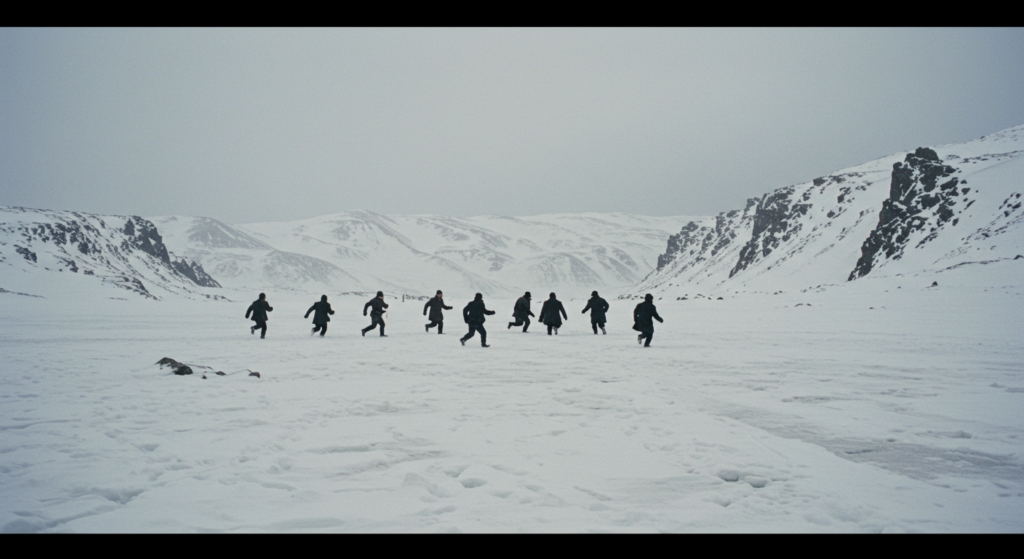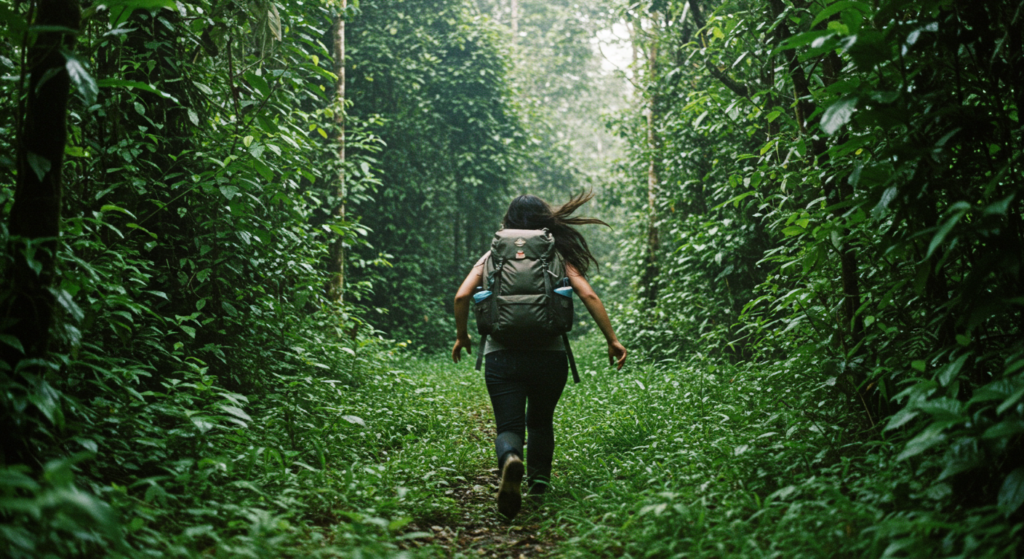10 Twisted True Crime Stories That Unfolded in the Wilderness
The wilderness has long been a place of solace, adventure, and untamed beauty. Yet, beneath its serene facade lies a darker side where some of the most chilling true crime stories unfold. The isolation, unpredictable elements, and lack of witnesses create the perfect setting for mysteries that remain unsolved for years. From strange disappearances to cold-blooded murders, these stories prove that even nature’s tranquility can harbor secrets.
1. The Dyatlov Pass Incident: A True Crime Frozen in Time

In 1959, nine experienced hikers set out into Russia’s Ural Mountains on what was meant to be a challenging but routine expedition. Days later, their mutilated bodies were discovered under baffling circumstances. Some were found with fractured skulls and broken ribs, while others were missing eyes and tongues. The state of their tent, slashed open from the inside, and their lack of proper clothing hinted at a desperate attempt to escape something terrifying.
Theories about what happened to the group range from avalanches and hypothermia to more sinister explanations like Soviet military experiments or alien encounters. However, none of these theories fully explain the bizarre injuries and peculiar details of the case. Over six decades later, the Dyatlov Pass Incident remains one of history’s most haunting wilderness mysteries.
Despite modern advancements in forensic science, the case continues to captivate and confound investigators and enthusiasts. For an in-depth exploration, this National Geographic article delves into recent studies and theories surrounding the mystery. Documentaries, books, and even scientific studies have delved into the mystery, but no definitive answers have emerged. The frozen, desolate landscape of the Ural Mountains adds an eerie backdrop to this unsolved enigma.
2. The Disappearance of Geraldine Largay
Geraldine Largay, affectionately known as “Gerry,” was an experienced hiker who embarked on a solo trek along the Appalachian Trail in 2013. At 66 years old, she was well-prepared and had extensive outdoor experience. However, one wrong turn proved fatal when she accidentally strayed from the trail in Maine’s dense forests.
Despite an extensive search involving hundreds of volunteers, helicopters, and K-9 units, Gerry’s fate remained a mystery for two years. Her skeletal remains were eventually discovered along with her journal, which chronicled her final days. In heartbreaking detail, she described her attempts to survive, rationing food and water while waiting for rescue.
Her story underscores the unforgiving nature of wilderness survival. It also serves as a reminder of the importance of preparation and reliable navigation tools. Gerry’s disappearance continues to resonate with hikers and adventurers worldwide as a tragic cautionary tale.
3. The Cold Case of David Gonzalez
In 2004, nine-year-old David Gonzalez disappeared during a family camping trip in California’s San Bernardino National Forest. His parents had momentarily left him unattended near their campsite, and when they returned, David was gone. An intensive search was launched immediately, but no trace of him was found.
Years later, a partial human skull was discovered in the forest, and DNA testing confirmed it belonged to David. However, the circumstances surrounding his disappearance and death remain unknown. Investigators have speculated about animal attacks, accidental injuries, or even foul play, but no evidence has definitively pointed to any single cause.
The tragedy of David’s case highlights the vulnerabilities of children in the wilderness. It also underscores the need for constant vigilance and safety precautions when camping in remote areas. The unanswered questions surrounding his death continue to haunt his family and the broader community.
4. The Strange Deaths at Death Valley

Death Valley National Park is infamous for its scorching heat and unforgiving terrain, but in 1996, it became the site of a baffling mystery. Four German tourists, a couple and their two children,vanished while exploring the area. Their abandoned rental van was discovered days later, stuck in sand and miles from any known trail.
It wasn’t until years later that skeletal remains matching the family were found scattered across the park. Investigators pieced together a grim story of dehydration and heatstroke, but questions linger about why the family ventured so far off course. Some speculate they were led astray by faulty maps or miscommunication.
The tragedy serves as a stark warning about the dangers of Death Valley. With temperatures often exceeding 120 degrees Fahrenheit, even the smallest misstep can be fatal. This potential true crime remains one of the most chilling examples of nature’s lethal power.
5. The Murder of Christopher McCandless
Christopher McCandless’ journey into the Alaskan wilderness was immortalized in the book and film Into the Wild. In 1992, McCandless abandoned modern comforts to live off the land, ultimately settling in an abandoned bus. Four months later, his body was discovered by hunters, weighing just 67 pounds.
Though officially ruled as death by starvation, debates continue about the exact cause. Some believe he accidentally poisoned himself by consuming wild plants, while others suggest deeper, undisclosed factors may have contributed. McCandless’ decision to live in isolation also raised questions about mental health and the romanticization of wilderness survival.
His story remains both a cautionary tale and an inspiration for those seeking to escape societal norms. While McCandless’ life and death are polarizing, they continue to spark conversations about the human spirit and our relationship with nature.
6. The Bennington Triangle Disappearances
Between 1945 and 1950, Vermont’s Bennington Triangle became the site of five mysterious disappearances. The victims, ranging from an 8-year-old boy to a 74-year-old woman, vanished without a trace while traversing the remote wilderness. Despite extensive searches, no bodies were ever recovered.
Theories about the disappearances include serial killers, wild animals, and even supernatural forces. The region’s reputation for strange occurrences has fueled speculation, with locals reporting eerie lights and unexplainable phenomena. The Bennington Triangle has since become a hotspot for paranormal enthusiasts.
Although decades have passed, the disappearances remain unsolved. The area’s dense forests and rugged terrain make it both a beautiful and treacherous destination. For those who venture into the Bennington Triangle, its mysteries serve as both an allure and a warning.
7. The Yuba County Five
In February 1978, five men from Yuba City, California, went missing after attending a basketball game. Their car was later found abandoned in a remote area of the Plumas National Forest. Months later, the remains of four of the men were discovered in various states of decomposition, while the fifth man was never found.
The circumstances of their deaths were puzzling. One man had survived for weeks by eating scavenged food before succumbing to starvation. Investigators found no clear explanation for why the group ventured into such an isolated area or why they abandoned their car, which was still functional.
The Yuba County Five case has been called the “American Dyatlov Pass Incident” for its bizarre and inexplicable nature. Decades later, it remains one of the most haunting wilderness true crime mysteries in U.S. history.
8. The Case of Catherine Johannet

Catherine Johannet, a 23-year-old Columbia University graduate, was traveling in Panama when she decided to hike a popular but isolated trail in 2017. Days later, her body was discovered, and authorities confirmed she had been murdered. The idyllic location where she sought adventure turned into a crime scene.
Local investigations revealed that Catherine’s death was a result of blunt force trauma, likely inflicted during a robbery attempt. Her story drew attention to the dangers faced by solo travelers, particularly women, in remote areas. Despite arrests made in connection with her case, questions about her final moments linger.
Catherine’s tragic story underscores the importance of prioritizing safety while traveling. Her legacy continues to inspire discussions about responsible tourism and the risks of venturing off the beaten path.
9. The Lake Bodom Murders
In 1960, three teenagers were brutally murdered while camping near Finland’s Lake Bodom. A fourth teen survived but sustained serious injuries. Despite decades of investigation, the perpetrator was never identified, making it one of Europe’s most infamous unsolved true crimes.
The case has inspired numerous theories, including suspects ranging from locals to the surviving teen. Over the years, advancements in forensic technology have reignited interest in the case, but no definitive answers have emerged. The gruesome nature of the murders continues to capture the public’s imagination.
Lake Bodom’s tranquil setting now carries a dark legacy. The murders serve as a chilling reminder that even serene wilderness locations can harbor unspeakable horrors.
10. The Mystery of the Missing Sodder Children

On Christmas Eve 1945, the Sodder family home in West Virginia caught fire. While five of the ten children escaped, the other five were presumed dead. However, no remains were ever found, leading to suspicions of abduction and foul play. The case intersected with wilderness when theories suggested the children were taken to remote areas.
Over the years, the Sodder family received strange clues, including a photograph of a young man resembling one of the missing children. Despite their efforts to uncover the truth, this true crime remains unsolved. The fire’s origins and the children’s fate continue to fuel speculation and conspiracy theories.
The Sodder case is a poignant example of how crimes can intertwine with remote and inaccessible areas. It also highlights the enduring pain of unanswered questions for families left behind.
Why the Wilderness Attracts Such True Crime
Wilderness areas offer isolation, making it easier for perpetrators to commit crimes without detection. The lack of surveillance, sparse populations, and rugged terrain make investigations difficult. Furthermore, the unpredictability of nature can obscure evidence, leaving cases unsolved for decades.
How to Stay Safe in the Wilderness
- Inform Someone: Always let a friend or family member know your route and expected return time.
- Carry Essential Gear: Bring navigation tools, a first aid kit, and a reliable communication device.
- Stay on Marked Trails: Venturing off-trail increases the risk of getting lost or encountering danger.
- Trust Your Instincts: If something or someone seems off, it’s best to err on the side of caution.
- Travel in Groups: There’s safety in numbers, and it’s harder for perpetrators to target groups.
Nature’s Beauty, Humanity’s Darkness
These true crime stories serve as stark reminders of the dangers lurking even in the most picturesque locations. Whether hiking, camping, or simply exploring, vigilance is key. While the wilderness offers breathtaking beauty, it also demands respect for its unpredictable nature and hidden perils.
The wilderness has always been a double-edged sword—a source of wonder and a backdrop for unspeakable crimes. By learning from these chilling stories, we can better appreciate the importance of preparation and caution when venturing into the wild. Stay curious, but always stay safe.
